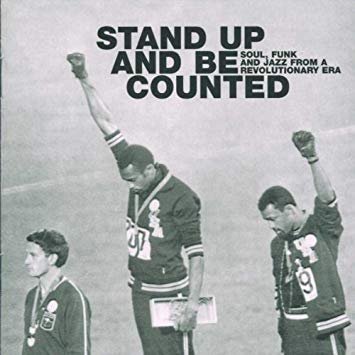I was never a fan of Motown and sixties R&B; it came a decade before I came of age and I was never retroactively especially drawn to it. But that musical era still brings back memories as an early teenager growing up in a majority Black neighborhood in northwest Baltimore, of the one-room corner record store – dark and filled with black lights and psychedelic posters – at Gwynn Oak Junction blaring the latest soul from two outside speakers; a neighborhood where you could find (if you searched just a little), Afro-Cola in sky blue cans with an outline of Africa filled in with red, black and green bars (it tasted like Royal Crown). Aretha, of course, was the personification of the style and time: an unmistakable voice, powerful, and full of emotional resonance, able to shift effortlessly from exuberance to more reflective inflections.
But she was not alone. In nearly all of that era’s R&B music, there was an intensity that captured all the social hope of the times. Although political issues were not always a major theme , the music in form was political by definition. The vocals delivered an unmistakable message of “now I am free”; joy itself became an act of defiance. The most overt political messages often came out in the secondary groups, whose work is brilliantly captured in the two volumes of “Stand Up and Be Counted,” obscure R&B songs like the Voices of East Harlem’s “Right On, Be Free,” Gary Byrd’s “Are You Really Ready for Black Power?”, and Esther Morrow’s “Things Ain’t Right” that – and I’m just guessing here – were produced on small labels for the Black R&B market that, unlike Motown, had no reason to compromise lyrics in that elusive chase for white cross-over dollars. Even the Black Panther Party briefly had a house band.
But in the best 60s era R&B, it wasn’t just the vocal techniques, but often moods evoked by lyrics and music together that most stood out. Otis Redding’s “Sitting On The Dock of the Bay” and Brook Benton’s “Rainy Night in Georgia,” for example, skillfully combined loss, regret, resilience and a need to “keep on keeping on” despite devastating setbacks in complex songs that shifted emotional gears several times in little over three minutes. And yes, while it’s true that the Supremes and Temptations mostly sang lyrically predictable love songs, singers like Dinah Washington captured more of a poetry laced with a blues sensibility in lyrics such as those to her minor hit, “This Bitter Earth”:
“This bitter earth/Well, what a fruit it bears/What good is love/Mmh, that no one shares?/And if my life is like the dust/Ooh, that hides the glow of a rose/What good am I?/Heaven only knows/Oh, this bitter earth/Yes, can it be so cold/Today you’re young/Too soon you’re old/But while a voice/Within me cries/I’m sure someone/May answer my call/And this bitter earth, ooh/May not, oh be so bitter after all.”
The contrast with today’s R&B couldn’t be greater. Singers like Beyonce, Rhianna, and Chris Brown have limited vocal range; the lyrics rarely get beyond simple Boy/Girl/ I Miss/Love/ You So and the powerhouse belter of 60s R&B is banished to the musical netherworld. Yes, there are exceptions: the late Whitney Houston, Jennifer Hudson, and Ceelo Green stand out, but, except for Whitney, most artists using that style are second and third tier performers (in popularity at least) and use it in a conscious nod to the past rather than innovating the style further, with the outstanding exception of Ceelo Green’s Gnarls Barkley work with Danger Mouse in songs such as “Who’s Gonna Save My Soul” (https://www.youtube.com/watch?v=oOz0rxmeWD4). And more telling, even if their vocal prowess matches up with sixties R&B, with more recent singers, lyrics are mostly conventional and one-dimensional, rarely capturing the emotional heights, nuance and tone of the best of 60s R&B. Many more others, such as rapper/singer Nikki Minaj, “sing” as if they are breathing heavy; only the Auto-Tuning and studio trickery pumps-up and disguises their muffled, weak voices.
In R&B now, there is almost a self-stifling compared to the past, a distinct flattening of affect that impacts both music and lyrics. Some perceptive critics such as David Masciotra have traced the decline of soul to the waning influence of gospel (“You Buried The Queen of Soul But Soul Was Already Dead”, https://www.theamericanconservative.com/articles/you-buried-the-queen-but-soul-was-already-dead/) Masciotra argues that passion is out in contemporary R&B as well as in Country too because passion conflicts with today’s “cool” sensibility:
“For the emotional exchange of music to transpire, the singer must start with the element of passion—something that a producer cannot inject into a song using a button on a computer and that a marketing specialist cannot achieve no matter how sophisticated the packaging and promotion.”
It’s telling that the word “soul” is no longer used, replaced with the blander description “Rhythm and Blues.” But I think the issue is larger than just an absence of passion and feeling; those are the symptoms and not the cause. I choose to believe there’s more of a profound change in substance at work. Popular music never operates in a vacuum; it instead turns out to be a “canary in the coalmine” for larger shifts in social conditions. Popular music reflects and sometimes even shapes these conditions, soaring up when optimism, struggle, and change thrives– or, as in today, crashing down when there’s little of any of these much in view.

